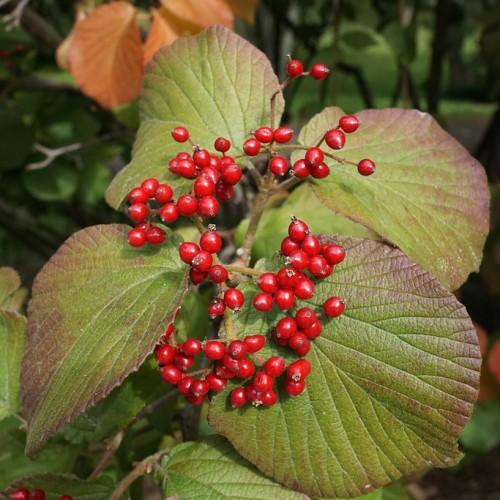
linden viburnum
Viburnum dilatatum
Cycle:
Perennial
Watering:
Average
Hardiness Zone:
5 - 8
Flowers:
Flowers
Sun:
Full sun,part shade
Fruits:
Fruits Ready In
Leaf:
Yes
Growth Rate:
High
Maintenance:
Low
Drought Tolerant:
Yes
Salt Tolerant:
Yes
Invasive:
Yes
watering
Linden viburnum should be watered every 7-10 days during the growing season to keep the soil slightly moist. Make sure that the plant does not get too soggy as this can lead to root or stem rot. For best results, water deeply and slowly to ensure that the water penetrates the soil and reaches the roots of the plant. During late summer and fall, water only when the soil is dry to the touch, as the plant needs less water during this time. In the winter, it is best to only water once every 4-5 weeks to keep the soil slightly moist, as plants enter a dormant state.
sunlight
Linden viburnum (Viburnum dilatatum) requires full sun to partial shade. This type of plant prefers to be placed in an area with at least 6 hours of direct sun per day when planted in full sun. When planted in partial shade, it can tolerate sun exposure for as little as 4 hours a day. The amount of sun exposure that the plant gets is ideally based on its location in an outdoor garden or border. When placed in containers, the linden viburnum should be able to tolerate periods of all-day sunlight exposure.
pruning
Linden viburnum (Viburnum dilatatum) should be pruned in late winter or early spring before the buds start to open. Prune out any branches that cross or rub together, as well as any dead, diseased, or damaged branches. Also prune out any suckers or water sprouts growing from the base. If the shrub is in need of renewal prune it back by 1/3 or more. Remove any branches that are too tall or disproportionate to the shrub. To maintain the shrub’s shape and size, selectively remove 1/4 to 1/3 of the oldest stems to the ground each year.
